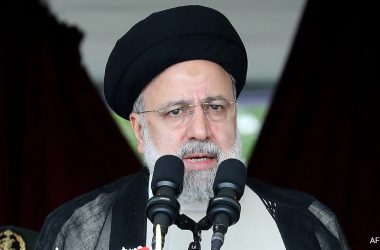
Israeli jets have been bombing Hamas targets in Gaza Strip (AFP)
New Delhi:
Israel has lined up its infantry and armoured elements along the border with Gaza Strip and gave Gazans 24 hours to leave the seaside area, ahead of an expected ground offensive in retaliation against Hamas for the deadliest terror attack in Israeli history.
If the Israelis enter Gaza Strip, the most lethal and intense urban warfare in recent times is likely to break out since this piece of land is one of the most densely populated in the world. Twenty lakh people live in just 365 square kilometres (sqkm) in Gaza, which is 5,500 people per sqkm compared to Israel’s 400 people per sqkm.
Gaza Strip’s narrow roads and lanes are not ideal battlegrounds for tanks and large armoured vehicles as attackers may use nooks and crannies of tall buildings that stand closely, almost glued to one another, to fire anti-tank guided missiles (ATGM).
The likelihood of entrenched fighting from building to building, close quarter battles (QCBs) and hand-to-hand combat is high if Israeli forces enter Gaza Strip. The Israel-Gaza war will become the latest case of urban warfare after Ukraine, and in recent times the Taliban’s takeover of Afghanistan, key battles from the war in Syria, and the Battle of Mosul in Iraq in 2016-17.
Here’s a brief overview of recent examples of urban warfare, and its implications on the expected Israeli ground assault on Gaza Strip.

Intense close quarter battles have been seen in cities in Syria between warring groups
Battles in Syria and Iraq
Urban offensives account for eight times more conflict-related civilian fatalities in four governorates in Iraq and Syria (March 2017 – July 2018) than fighting in other areas, the International Committee of the Red Cross said in a report in October 2018.
Urban offensives cause devastation and quickly lead to sharp spikes in casualties – both because of the fighting itself, and because of these battles’ compounding effects.
There are no fixed positions in urban warfare, and war is waged in a completely complex and multidimensional environment, Iran’s ‘Quarterly Journal of Strategic Knowledge Interdisciplinary Studies’ said in a report.
The experiences of the Syrian urban warfare show that the key characteristics are complexity, high human casualties and geopolitical consequences, said the report authored by Iranian professors Abol Hasan Kabiri and Alireza Saadat Raad.

Small groups of Ukrainian soldiers have been attacking large Russian tank formations in urban environment
War in Ukraine
The Ukraine war experience shows small anti-tank teams are extremely effective against armoured formations. Such small hunter-killer teams have been effective in manoeuvring in urban terrain to launch ATGMs into the thinly armoured roofs of Russian tanks, a report by two US-based military scholars said.
“Tanks need infantry and engineers; infantry and engineers need tanks in urban areas. Throughout the conflict, Russian armoured forces have advanced into urban environments without dismounted infantry support moving as screening and security for their vehicles. This lack of infantry presence allows Ukrainian forces to close with Russian armour and engage it directly with anti-tank weapons, repeating the same failures they made in Chechnya and the Soviets did in Afghanistan,” the authors Benjamin Phocas and Jayson Geroux said in the report ‘The School of Street Fighting: Tactical Urban Lessons From Ukraine’.
Current Situation in Gaza Strip
Any Israeli ground operation is complicated by Hamas’s holding — according to Israel’s government — of some 150 Israeli, foreign and dual-national hostages.
The Israeli army said today it had called on Gaza City residents to move “to the area south of the Wadi Gaza”, which is just below Gaza city in the 40 km-long territory.
“In the following days, the IDF will continue to operate significantly in Gaza City and make extensive efforts to avoid harming civilians,” the Israeli army said, referring to Israel Defence Forces. “Hamas terrorists are hiding in Gaza City inside tunnels underneath houses and inside buildings populated with innocent civilians.”
Gaza’s over 20 lakh residents are enduring the fifth war in 15 years. The territory had already been under a land, air and sea blockade since 2006. Israel has cut off water, food and power supplies to Gaza in a total siege it has vowed will not end until all hostages are freed.
Hamas has threatened to kill captives if Israel bombs Gaza civilian targets without advance warning.
“I know he’s out there somewhere,” a distraught Israeli, Ausa Meir, said of her brother Michael, who is among the captives, news agency AFP reported. “It’s very, very painful.”
The US has vowed unwavering support for Israel in its war on Hamas.
With inputs from AFP
Waiting for response to load…








